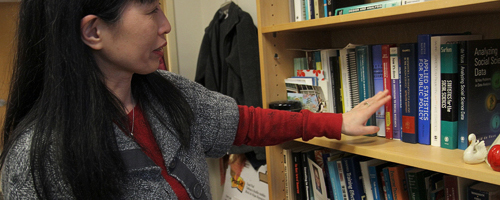When it comes to education, it seems that the general thought is that the better the teachers, the better the education. But there is also the economy to keep in mind. Our current economic state is less than desirable, so many schools and school districts have had to make tough decisions regarding the hiring of new teachers, repairs to school grounds and even school closures. The Portland public school district is no exception to this.
Portland public schools in trouble
When it comes to education, it seems that the general thought is that the better the teachers, the better the education. But there is also the economy to keep in mind. Our current economic state is less than desirable, so many schools and school districts have had to make tough decisions regarding the hiring of new teachers, repairs to school grounds and even school closures. The Portland public school district is no exception to this.
Starting May 22, the district will begin hosting the first of three meetings to gauge the public interest in a drastic new approach to how finances will be dispersed within the district and whether or not new educational bonds need to be passed.
Right now the biggest issue is that Portland has more than 80 schools within its public school district alone, many of which were built in the 1920s or earlier. As one can imagine, many of these schools have fallen into disrepair. These buildings hold quite a bit of historical sentiment within the district—as well as leaky roofs and old pipes.
The school district recently opted to close the Harriet Tubman Leadership Academy for Young Women and Humboldt School. The latter will be merged with Boise-Eliot School.
These closures were prompted by a budget shortfall of $27.5 million. As if closing schools was not hard enough, the imminent closures mean the potential layoffs of more than 100 teachers and 30 positions. Both schools will be permanently closed as classes let out for summer break.
For the students who will be transferring to new schools due to the closures, it is great that they’ll still have a place to go. However, a tide of new students means larger class sizes for already over-burdened teachers. Not closing the schools would be the best option for the students and teachers, but when there are such huge budgeting shortfalls, those variables are put on the back burner.
That’s where these prospective bonds come in. The bonds would provide the school district with the funds they need to repair various buildings, thus providing a safe place of education for both Portland’s students and teachers. A year ago the Portland public school district attempted to pass bonds similar to the ones now being proposed.
However, despite early polls showing broad support, voters decided that these previous bonds were too expensive during such an economically tough time. With the economy starting to make a positive comeback, the anti-tax sentiment that has held a grasp on voters will hopefully subside a bit.
In order to garner support for these bonds, the school district will be holding the aforementioned meetings throughout the remainder of the month. Currently, the district’s project planning committee is suggesting that the community engage in a series of construction bonds over the next few years in order to start the necessary repairs.
The committee, which consists of architects, parents and teachers, has drafted a number of plans that can work to accommodate various bond amounts and building/repair directions. There is even a “conservative plan” which only proposes slightly less than $400 million for bonds. This plan was the most popular among the advising committee.
However, these proposed bonds do bring up an important question: Should we value the quality of education and learning facilities over providing jobs in teaching for future generations?
As a prospective English teacher, I feel that there is no doubt that providing jobs for new teachers right now is very important. Of course, so is ensuring that the current generation of grade school students is getting a decent education. A good education is one of the most important things that can be given to a child, but the definition of a “decent education” is subjective.
While the major emphasis should always be on the students, both the district and voters should remember that teachers are the ones responsible for instilling knowledge in the minds of the youth. Older teaching techniques are getting scrapped, making way for new talent in the teaching field and bringing a more progressive outlook to education.
With these bonds the district will, at the very least, be able to repair the already existing schools, thus providing a safe learning environment for the students of Portland. If these opportunities are taken away, what will be left for the kids who need decent schooling? If the roots are not nurtured during the formative years, higher education will become a pipe dream.
That is why these debates and bonds are so vitally important, not just for the school district, but for the kids.
The district having more money will mean more jobs, but it will also mean that the district itself can work harder to make sure both the quality of education and safety of the students remains high, thus enabling a productive and healthy place of learning.
The first community discussion meeting will be held at Roosevelt High School, the second at Madison High School and the third at Lincoln High School. Each meeting will start at 5 p.m., end at 6 p.m. and be followed by a presentation and discussion from 6–8 p.m.
The district is making an effort to be progressive and help make learning safer, despite having to close schools and cut teachers. Without a safe educational experience with faculty that actually cares, there isn’t much hope for the future of current students.




